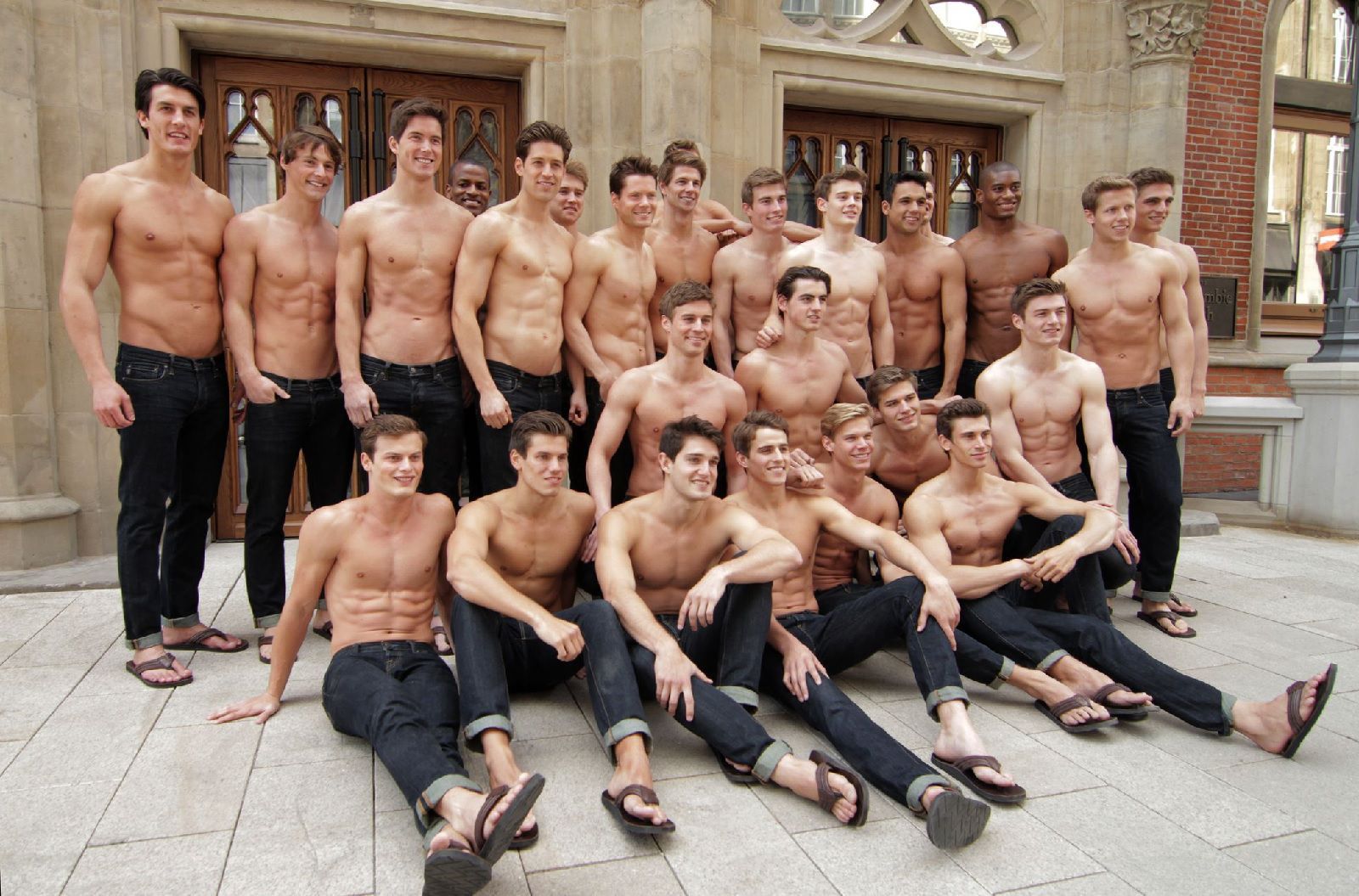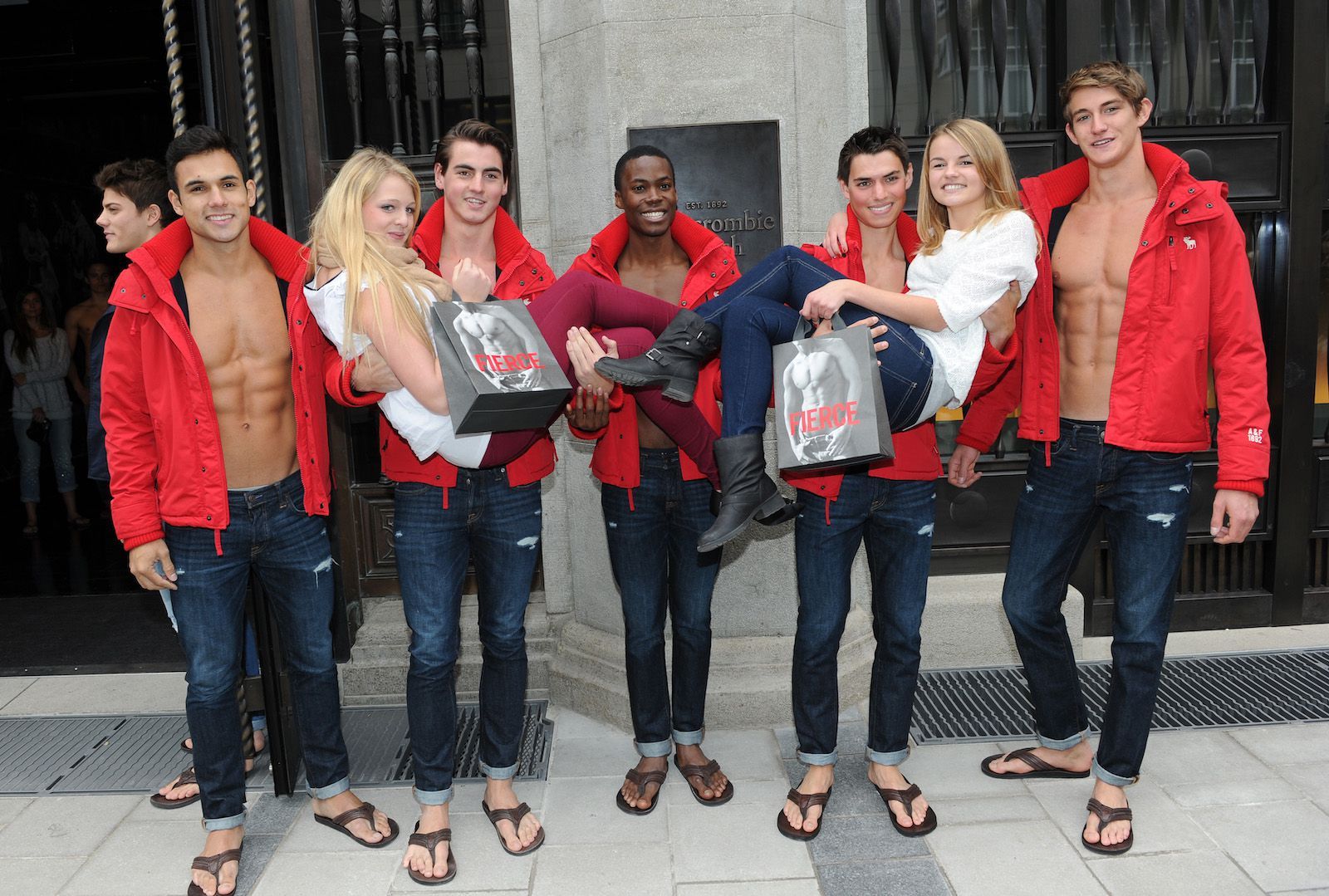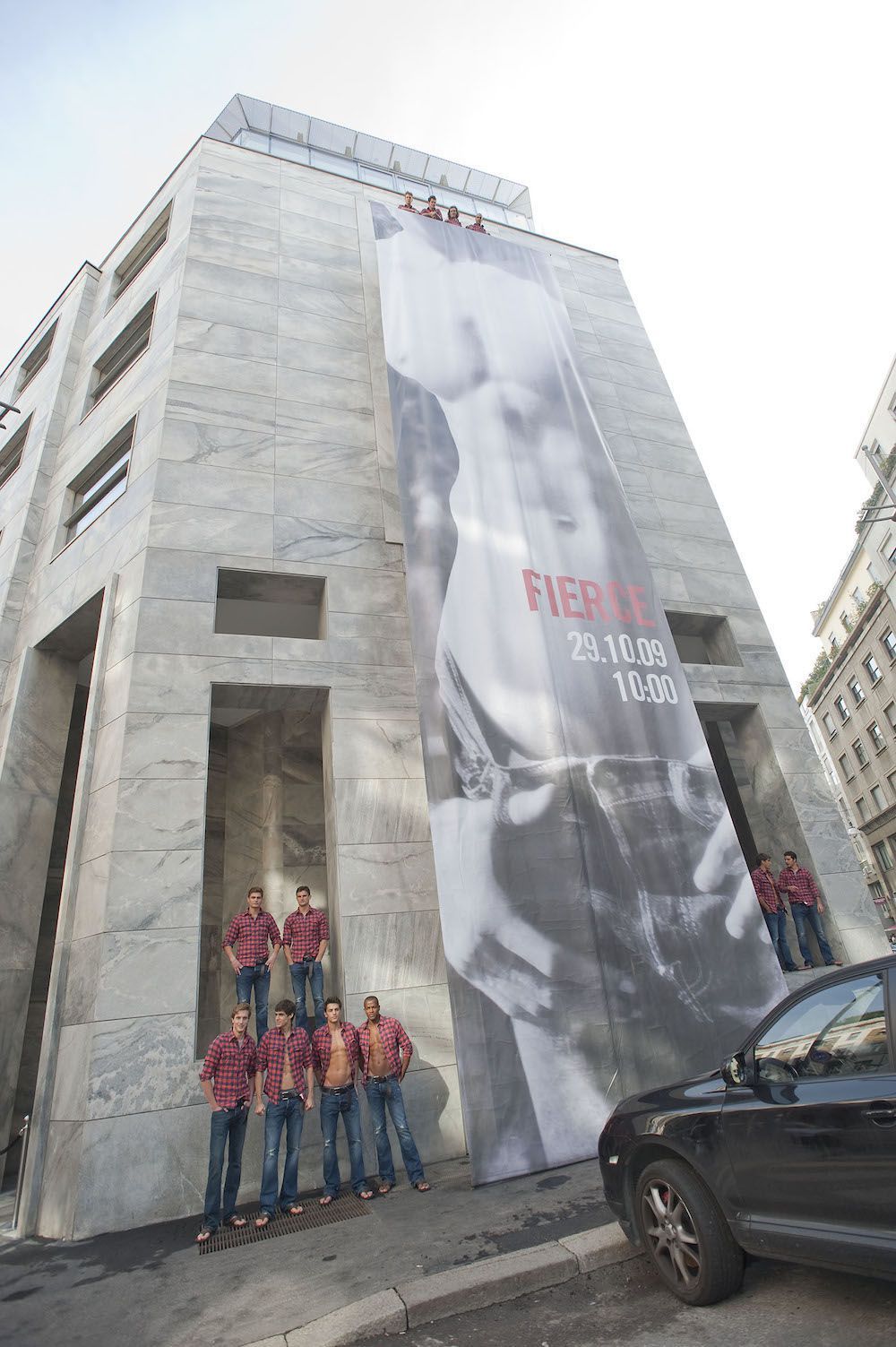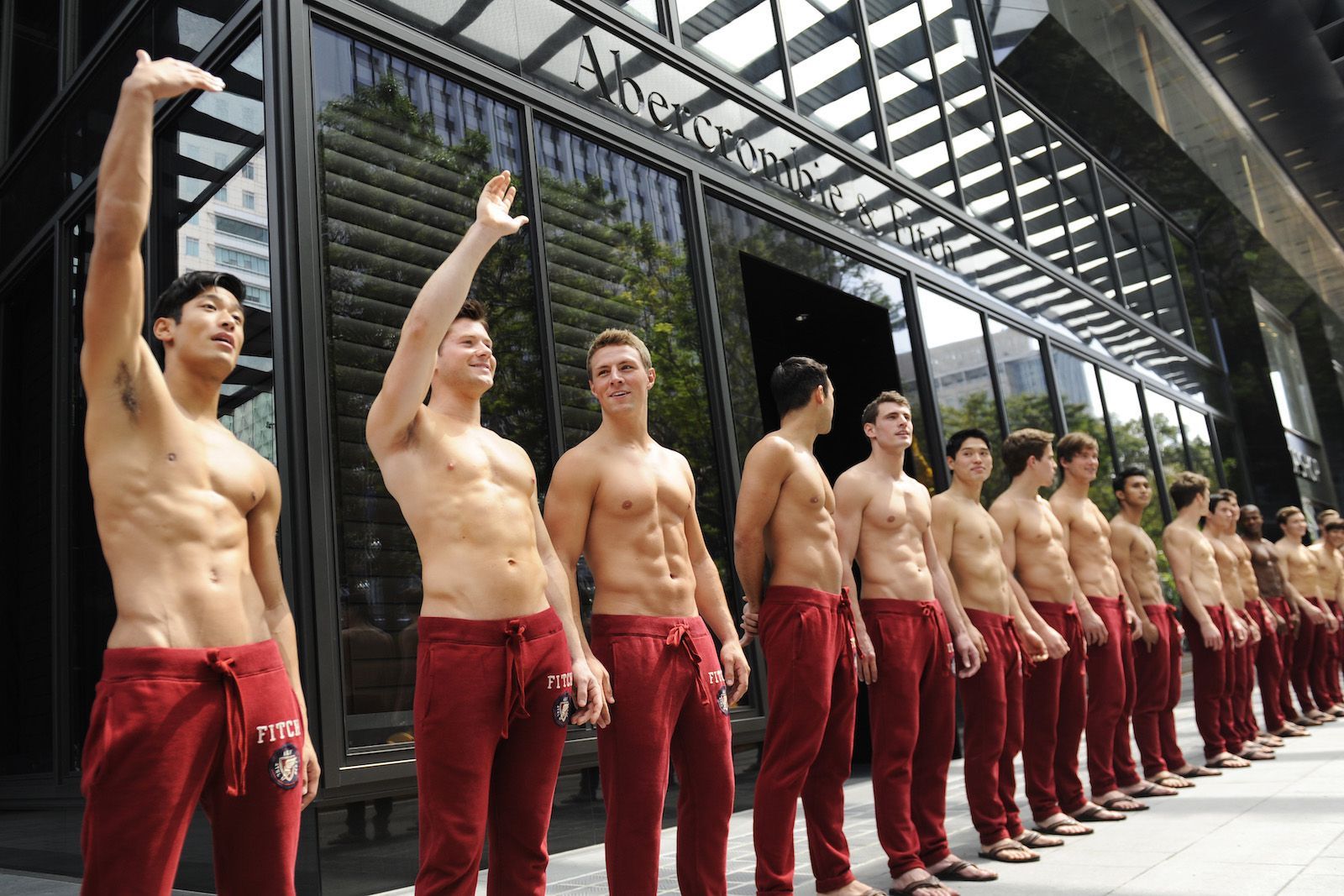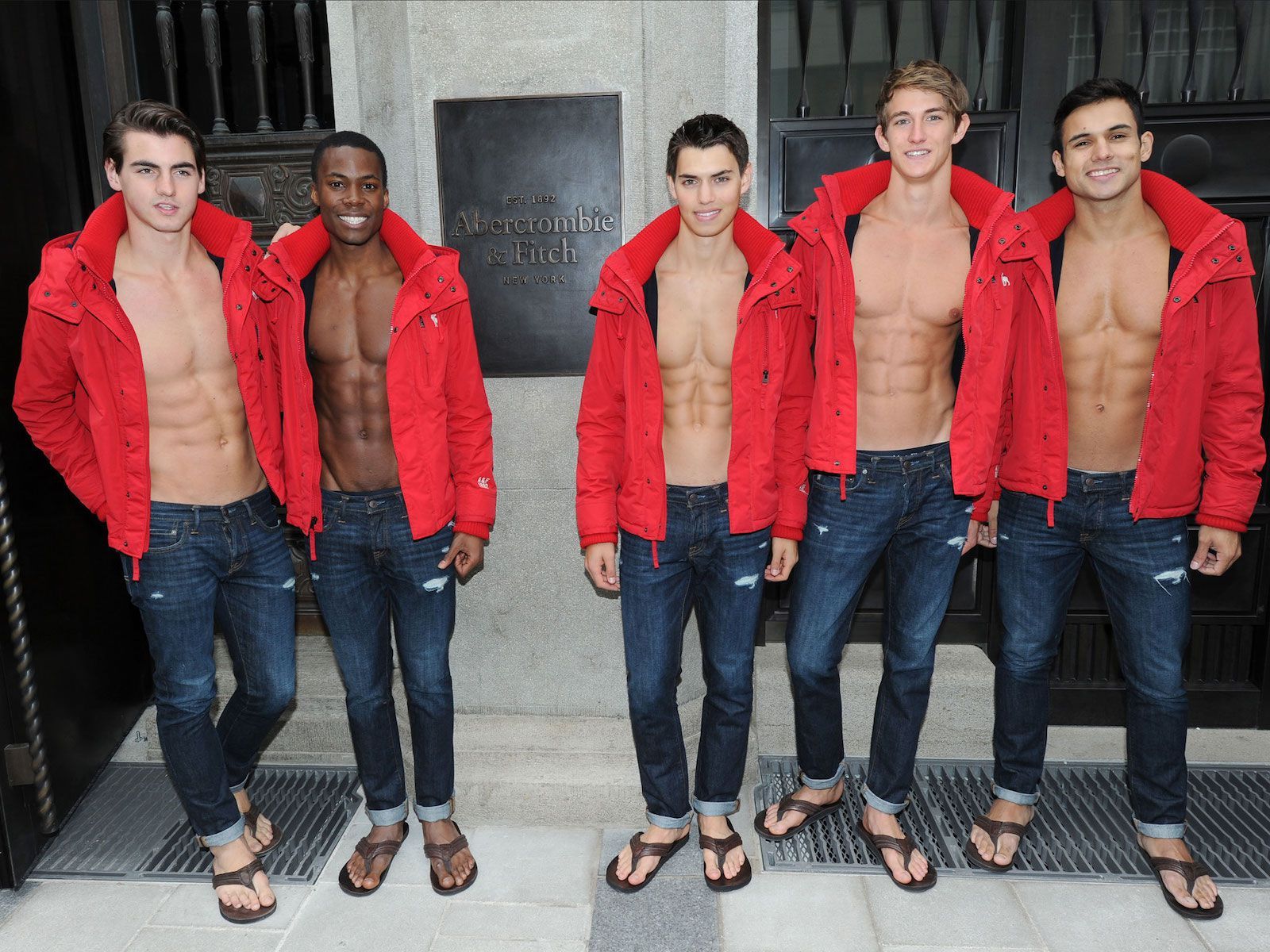
The unstoppable collapse of Abercrombie & Fitch The iconic brand's store in Milan will close its doors: it's the end of an era
The news arrived a few days ago: after Hong Kong and Copenhagen, Abercrombie & Fitch will close between 2019 and 2020 its stores in Fukuoka, Japan, and in Milan. The shop located in the historic building in Corso Matteotti designed by Giò Ponti will reportedly close its doors by the end of 2019.
Opened on October, 29th 2009 a short walk from Duomo, in the early years the store would literally been assaulted by fashion enthusiasts and simple curious, ready to make long queues to access the dressing rooms, the checkouts (waiting becomes a strategy to make the product even more desirable), but, above all, to be photographed with the salesman-models. As in the other flagship stores around the world, the Italian one also had all the characteristics strictly imposed by the management and designed to attract consumers: bizarre and refined interior design, much more like a club than a clothing store, made of crystal chandeliers, canoes, palms, armchairs made of animal hair, embalmed moose (symbol of the brand). All this surrounded by darkness, loud music and the unmistakable scent that permeated even the clothes. Every detail is part of a communication strategy based on sensory over excitement and aimed at encouraging the creation of a particular experience that the customer wants to keep repeating. Even the English phrases that the models addressed to the customers (How're you doing? Hi guys, what's going on? Thanks for coming!) not only gave a touch of internationality to the store, but allowed the costumers you to live an experience similar to the one you would live in the store on the Fifth Avenue in NY or in London.
To mark the fate of the Milanese space, was the bad performance of the title Abercrombie & Fitch in the market. In the first fiscal quarter the company suffered a loss of 19.2 million dollars and on Wednesday 29 May it sold 24% to 19 dollars, bringing its balance sheet from the beginning of the year to -3 and that of the last 12 months to -23.4%. Although the result is better than expected by analysts, the latest data confirms the period of negative that A&F is experiencing. According to CEO Fran Horowitz, Reuters reads, to weigh on the results of the brand, there would have been the inability to fully exploit the potential in Asia and the main promotional events on platforms such as, for example, Tmall.
The issue is actually more complex. Among the many factors that affected the crisis of the label are the different tastes and buying behaviors of young people who prefer to save money with online shopping and that look for not only for good products, but also competitive prices, speed of delivery, a certain ethics in production and variety of choice must be almost endless as confirmed by Marcie Merriman, founder of the consulting firm Primal Growth:
"Today's teenagers are radically different from those of the past. They have endless choices and reject uniforms. They have a lot of options thanks to shops like Forever21 and Hennes & Mauritz (H&M), thanks to the web and social media they can create a much more individual style. Abercrombie might respond to this generation's desire to stand out, but its products today can't communicate any of this."
In the 1990s and early 2000s, Abercrombie & Fitch with its shirtless and flip-flops models was one of the most popular destinations for travelers to the States and its garments were equally iconic, but now things have changed. Founded in Manhattan in 1892 by David Abercrombie, initially A&F was simply a sportswear and professional equipment store that in 1900 was partly acquired by one of his regular customers, wealthy businessman Ezra Fitch. The business was a success, until the two partners disagreed on the future of the company, split up and Fitch remained in charge. His results were excellent: A&F became the first shop to sell both men's and women's clothing, it dressed Charles Lindbergh during the historic aerial crossing of the Atlantic Ocean in 1927 and celebrities such as John F. Kennedy and Teddy Roosevelt. Since Fitch left the company in 1928, the business has survived various leadership changes, but finds the identity that made it popular in 1988 when Michael S. Jeffries became president. His main merit is having focused on the teen clothing market, being aware of its enormous expansion, by "promoting miniskirts, polo shirts, sweatshirts and dresses, selling them at prices never seen before in the teen industry. The philosophy of sensory input that makes the brand's stores unique is also his, as is the choice to have model-like salespeople, initially recruited with a casting in the campuses of American colleges. To regulate their characteristics Jeffries writes a 30-page manual called the "Look Book". In its pages you can read a long series of very strict rules about the physical presence that salesmen and women must respect, such as no tattoos, no jewelry, no make-up and long and well cared hair for women, no beard and moustache for men. Required were also fit and sculptural bodies, also exalted in catalogs and advertising increasingly full of references to sex. The hot aspect of boys and girls (under 25) becomes one of the main attractions of A&F, which reached its peak of popularity in 1999 when it was mentioned in the text of the hit pop Summer Girls by LFO. Other rules imposed by Jeffries include: no sizes over 44 and no black clothes.
All decisions that over time spark more and more controversy. There were rumors about discrimination against African-Americans, Hispanics and Asians (relegated to secondary duties); about more than 62,000 clerks forced to spend almost their entire salary on Abercrombie clothes; about cultivating an uneducational and inappropriate image, "conformist, sexy and exclusive", constantly fuelling the idea that its products should only be worn by rich and cool people.
On top of these accusations there are the static immobility of the company and the changed tastes of the millennials to explain the current crisis. In the last two years the brand, with a new management team, has tried to come back by rebuilding its image, eliminating shirtless models, focusing on jeans as the key product, focusing on testimonials closer to its consumers and adopting a visual identity more oriented towards outdoor life, travel and less stereotypes. Unfortunately, the new strategy failed to save the Milanese store.










































